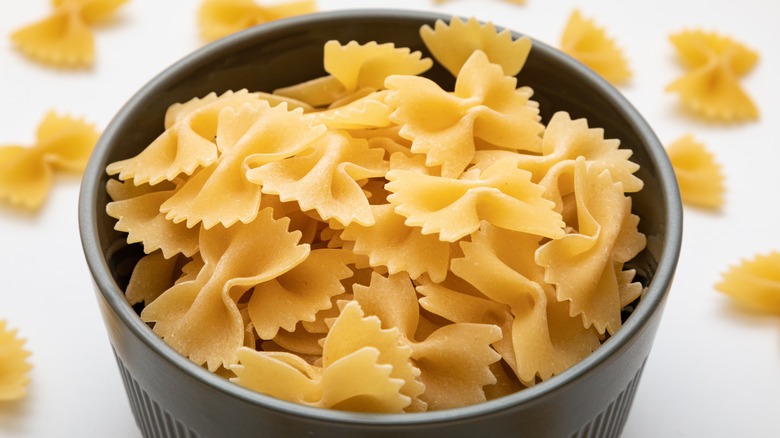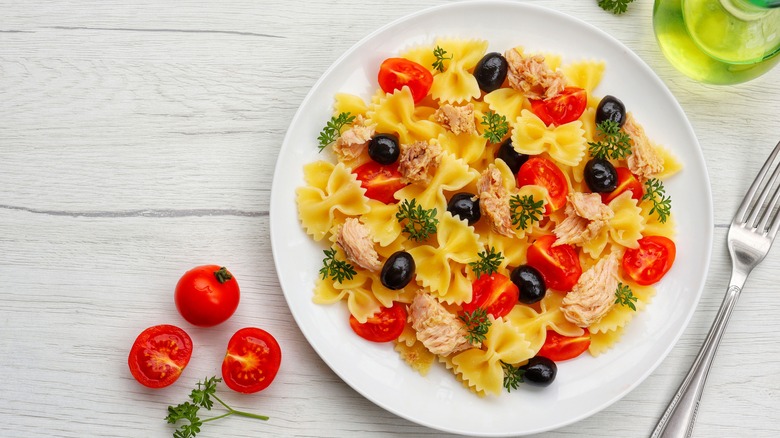Why You Shouldn't Use Farfalle When Making Pasta Salad
What's a summer cookout without a refreshingly cool, flavorful bowl of pasta salad? Though the dish might seem like a lackluster side compared to meaty main courses and barbecue favorites like corn on the cob or baked beans, pasta salad is a simple, yet sublime addition to any summer party menu. Tender pasta, tangy sauce, and tasty toppings make for a carb lover's dream salad, but there's a pasta salad sin that might surprise you.
While it makes appearances in many restaurants, delicatessens, and fridges of food fanatics, farfalle pasta salad is not the way to go, especially for those who prefer olive oil-based dressings. Affectionately called bow tie pasta for its distinctive shape, farfalle might seem like a fancier pasta salad option than the basic fusilli, but it's just not the right pairing for the best result. Farfalle noodles have knots in the middle that are prone to stiffness, especially when prepared al dente.
What's more? To make the ultimate pasta salad, noodles should be cooked just beyond al dente and served cold. Before you gasp in shock, there's a great culinary reason behind the tip. As the pasta cools, a process called retrogradation results in firmer noodles, which is great for fans of a slight chew, but doesn't help the case for bow ties with already firm knots. Slightly undercooking farfalle could mean a crunchy pasta salad, whereas the recommended overcooking could leave the delicate farfalle wings mushy, even after retrogradation. And that's just considering texture.
Farfalle falls flat in pasta salad
A boring, flavorless pasta salad dressing is the ticket to an untouched bowl in the cookout spread, so it's important to consider how different pasta shapes impact overall flavor. You may already know that long, thin pasta varieties like spaghetti, angel hair, and fettuccine don't work for pasta salads, but some compact noodles detract from the dish as well. The reason? It all depends on the sauce. Olive oil provides a smooth finish and delicate tang to pasta salads, but it's also more slippery than its mayo counterpart.
Because of this, oil-based pasta salads require a noodle shape with lots of rivets to properly catch the sauce. Sorry farfalle, you're just too slippery. Even if you maximize the impact of your vinaigrette by dressing the pasta while it's still warm, farfalle still falls flat — literally, the pasta shape is too flat. Fresh from the pot and still steaming, unrinsed pasta has a coating of starch that helps the sauce better stick to the noodles. In the case of farfalle, there's just not enough surface area on the flat edges or shallow central knot for this trick to do much good.
It might seem a little cliche, but fusilli is the absolute best choice for pasta salad. Its corkscrew shape provides tons of nooks and crannies for the thinner sauce to cling to, making it a better option for bold pasta salad flavor. So save the bow ties for a fancy night out, and stick to corkscrews for pasta salad success.

